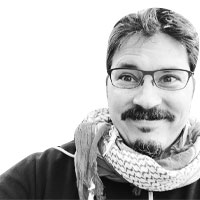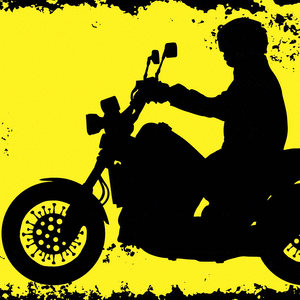Iceland is one of the most vaccinated countries in the world. But that didn’t stop the tiny island nation from catching a whole lot of COVID in recent weeks.
Although the natural, immediate response to this news might be panic, experts who spoke to The Daily Beast said that Iceland’s recent surge in infections—fueled by the new Delta variant of the novel coronavirus—is probably a sign that herd immunity is within reach over there.
What’s happening in Iceland right now might be one of the final stages in the long, often painful process by which a country achieves some form of population-level herd immunity against a dangerous virus.
Once COVID vaccines hit the market early this year, Iceland quickly secured enough doses for almost everyone. And people dutifully lined up to get their shots. Today, the country has administered 477,000 doses and 275,000 people have gotten at least one jab—77 percent of the total population. Add in people with natural immunity from past infection, and it’s likely that more than 80 percent of Iceland has some level of protection.
The 20 percent of Icelanders who didn’t get vaccinated or haven’t already had COVID are now catching Delta, alongside breakthrough cases of vaccinated people. (Children under 16, who aren’t yet eligible for vaccination, make up most of the unvaccinated population.) A couple thousand people have tested positive in recent weeks, a spike in cases far exceeding the worst weekly case-rates from 2020.
But hospitalizations have not surged to the same degree as cases in this latest Icelandic surge. That’s because older Icelanders, as a group, are highly vaccinated. Younger people, who as a group are less vaccinated, are the ones getting infected now. They have a better chance of weathering COVID without serious symptoms. And the antibodies and T-cells their immune systems are producing could represent the last—or close to last—brick in Iceland’s wall of immunity.
Now consider what happened in the United States while Iceland was working toward a minimally painful, population-level immunity.
Tragically, the U.S. is probably many, many months from achieving the same herd immunity. And as it does, the final surge—or surges—in infections could be much deadlier. That’s because Iceland has done almost everything right to get to herd immunity with the least possible pain. The United States, by contrast, has done almost everything wrong.
Iceland’s health department didn’t respond to requests for comment. Likewise, epidemiologists at Iceland’s biggest universities either didn’t respond or declined to comment. But American experts were eager to weigh in on what they described as an effective response to the pandemic. “This is a success story for Iceland,” Eric Bortz, a University of Alaska-Anchorage virologist and public health expert, told The Daily Beast.
To be clear, no one knows for sure what proportion of a population has to get vaccinated, or get infected and recover, before SARS-CoV-2 runs out of transmission pathways. In other words, no one knows exactly where herd immunity really begins. Epidemiologists once assumed that, with the novel coronavirus, it might take two-thirds of the population. New and more aggressive lineages that began appearing late last year convinced some experts to bump up their expectations. Maybe population-level immunity would require vaccination or natural immunity in three-quarters of people, they posited. Delta’s rapid spread starting this summer compelled some epidemiologists to revise their threshold estimates even higher.
“There is no question that the Delta variant has changed the goalposts,” Lawrence Gostin, a Georgetown University global health expert, told The Daily Beast.
Wherever the threshold is—80 percent, 90 percent, whatever—Iceland is much closer to crossing it than the United States is. Indeed, Iceland might be crossing that threshold right now. Bortz said Iceland, along with the United Kingdom, is one of the few countries where “a modicum of herd immunity against severe infection may be achievable” in the short term.
Getting there required discipline, sacrifice and mutual care on a national scale. When the pandemic first struck in the spring of 2020, the Icelandic government reacted swiftly. “Just letting the virus spread freely through society, no one said that,” explained Þórólfur Guðnason, the country’s chief epidemiologist. “We need to have some restrictions both at the border and domestically.”
Authorities limited travel to the rocky, volcanic country and got busy tracing contacts and quarantining exposed residents while also enforcing strong social-distancing measures. Mask-wearing was widespread and uncontroversial.
There were waves of infection, but they were never very bad. The first wave, in the spring of 2020, resulted in a few thousand confirmed cases. A second wave that fall added a few thousand more. Going into its third and most recent wave starting mid-July, the country had tallied around 7,000 cases (2 percent of the population) and just 30 deaths (.008 percent).
Meanwhile, while Iceland was locking down, Americans were taking to the streets to protest even the most modest social-distancing measures. Where Icelanders dutifully wore masks, right-wing media in the United States convinced millions of followers that masks were symbols of oppression.
Heading into this summer’s Delta surge, the United States had registered 34 million confirmed infections (10 percent of the population) and around 600,000 deaths (.18 percent). Cases and deaths were an order of magnitude worse in the U.S. than in Iceland.
As Iceland steadily vaccinated three-quarters of its people, the U.S. vaccination campaign started strong, then hit a wall of right-wing obstinance. The same misinformation-peddlers who castigated masks also conned millions of Americans—Southerners, Westerners and conservatives, mostly—into believing vaccines were part of some liberal plot.
Today, just 59 percent of the U.S. population has gotten at least one jab. The United States is sitting on tens of millions of unused doses of world-class vaccines while poorer, less privileged countries practically beg for access to shots.
Now, it’s true that tens of millions of Americans have caught COVID and recovered. Their antibodies and T-cells count toward herd immunity. But even taking into account widespread natural immunity still leaves somewhere in the vicinity of 100 million Americans—a third of the population—with zero immunity. No vaccine. No antibodies or T-cells. Nothing.
Icelanders are so highly vaxxed—and so open to the country’s ongoing vaccination campaign—that a few thousand cases, mostly mild, could push the population into herd immunity any day now.
Considering that as many as one in four American adults say they won’t ever get vaccinated, it could take millions of additional infections to get the U.S. through that same threshold. It’s anyone’s guess how long it will take for Delta or some future lineage to spread that widely, and how much damage it will do while getting there.
It’s possible, even likely, that most of those infections will be mild. But even a low rate of serious illness could kill thousands of Americans and leave thousands more with long-term complications—so-called “long COVID.”
“We have to be careful about what our expectations are with herd immunity,” Jeffrey Klausner, clinical professor of population and public health sciences, told The Daily Beast.
And in the time it takes the United States to rack up the extra infections it needs to get to herd immunity, the novel-coronavirus could produce variants—“lineages” is the scientific term—that are even more transmissible and virulent than Delta. It’s even possible some future lineage could partially evade the vaccines, thus imperiling vaccinated individuals alongside the unvaccinated.
“By allowing the virus to test a myriad of new variants in unvaccinated individuals, we may be naturally selecting the worst strains putting us all at risk—both in the U.S. and abroad,” Elias Sayour, a University of Florida professor of neurosurgery and pediatrics and director of the school’s Pediatric Cancer Immunotherapy Initiative, told The Daily Beast.
“We’re in trouble,” Bortz said. “The U.S. vaccination rate is nowhere near what is needed for broad immunity in the population, to limit the spread and consequences of [variant-of-concern] Delta and other COVID-19 variants.”
As Americans brace for another infectious fall, many of them might glance toward Iceland with envy. It wasn’t a foregone conclusion that the United States, despite possessing every material advantage, would fail so badly to build widespread immunity against the novel coronavirus.
It was possible to do better. Iceland is proving that.








